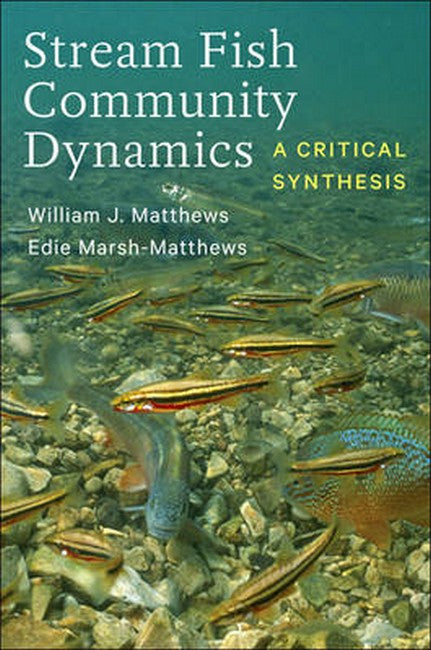Ecologists have long struggled to understand community dynamics. In this groundbreaking book, leading fish ecologists William Matthews and Edie Marsh-Matthews apply long-term studies of stream fish communities to several long-standing questions. This critical synthesis reaches to the heart of ecological theory, testing concepts against the four decades of data the authors have collected from numerous warm-water stream fish communities in the central and eastern United States.
Stream Fish Community Dynamics draws together the work of a single research team to provide fresh analyses of the short- and long-term dynamics of numerous streams, each with multiple sampling sites. Conducting repeated surveys of fish communities at temporal scales from months to decades, the authors' research findings will fascinate anyone searching for a deeper understanding of community ecology. The study sites covered by this book range from small, highly variable headwater creeks to large prairie rivers in Oklahoma and from Ozark and Ouachita mountain streams in Arkansas to the upland Roanoke River in Virginia. Its geographically widespread datasets span the midwestern and southwestern United States. The book includes
A comparison of all global and local communities with respect to community composition at the species and family level, emergent community properties, and the relationship between those emergent properties and the environments of the study sites Analyses of traits of individual species that are important to their distribution or success in harsh environments A review of evidence for the importance of interactionsincluding competition and predationin community dynamics of stream fishes An assessment of disturbance effects in fish community dynamics New analysis of the short- and long-term dynamics of variation in stream fish communities, illustrating the applicability and importance of the ""loose equilibrium concept"" New analyses and comparisons of spatiotemporal variation in community dynamics and beta diversity partitioning An overview of the effects of fish in ecosystems in the central United States
The book ends with a summary chapter that places these disparate findings in broader contexts and describes how the ""loose equilibrium concept""which may be the most appropriate default assumption for dynamics of stream fishes in the changing climate of the futureapplies to many kinds of stream fish communities.

